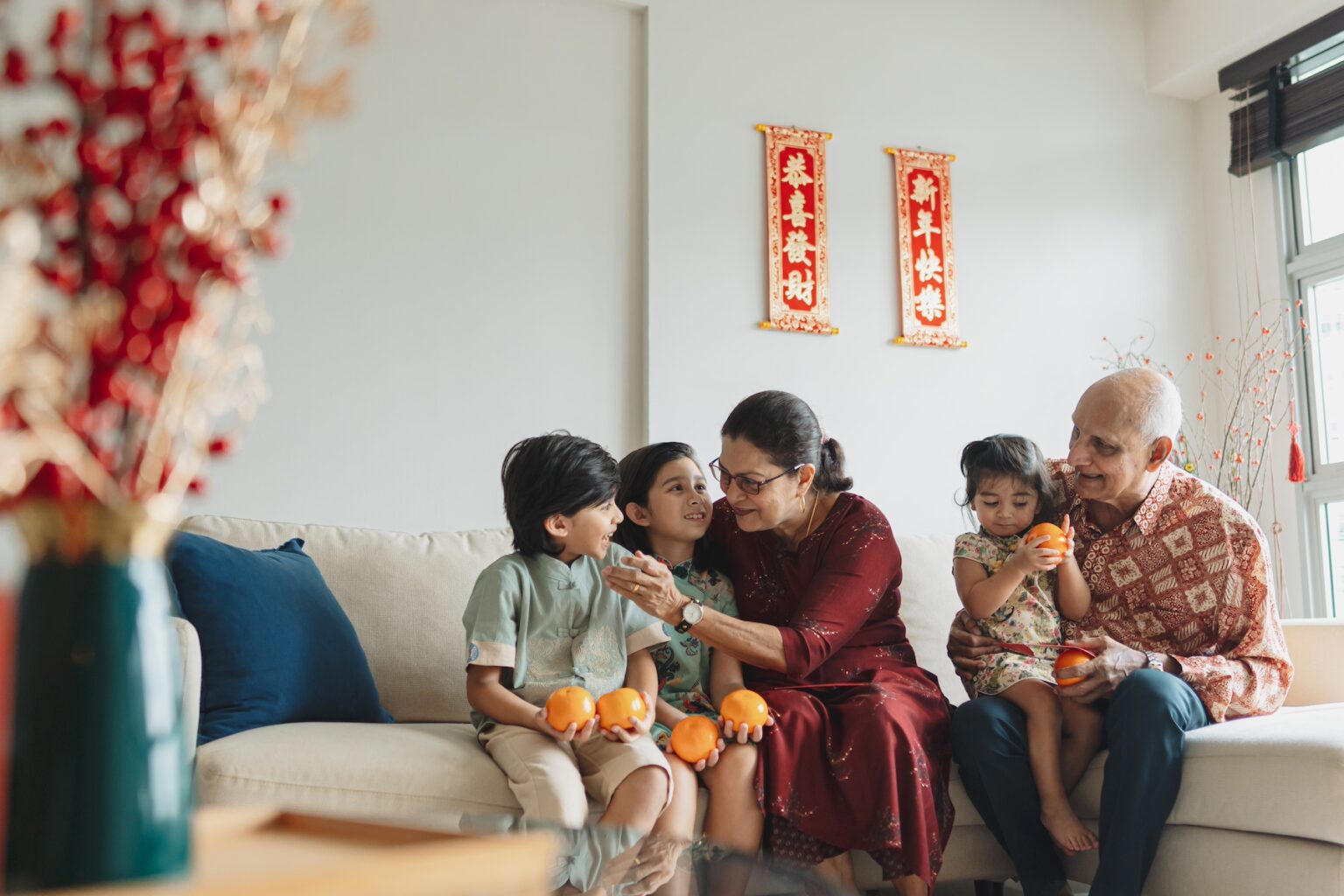Getting by in Singapore with just English is undoubtedly convenient, but have you ever wondered about the variety of languages buzzing around you? Signs boasting four languages are a regular sight in the city-state, which can be quite a sight for newcomers.
The tale of Singapore’s languages mirrors that of the nation itself. Dive deeper to uncover the rich historical tapestry woven into these languages, revealing why the country stands as a beacon of multiculturalism today.
Read on for more about the following:
- What languages are spoken in Singapore?
- The languages spoken worldwide
- Does Singapore have sign language?
- Origins and history of the four languages
- What are the dialects in Singapore?
- Pronunciation and phonology of the languages
- Grammar of the languages in Singapore
- Interesting facts about Singapore’s languages
- Language learning while in the country
- Useful resources
What languages are spoken in Singapore?
Singapore is historically a multilingual nation. Despite Malay being designated as the country’s National Language, the constitution acknowledges four official languages: English, Malay, Mandarin, and Tamil.
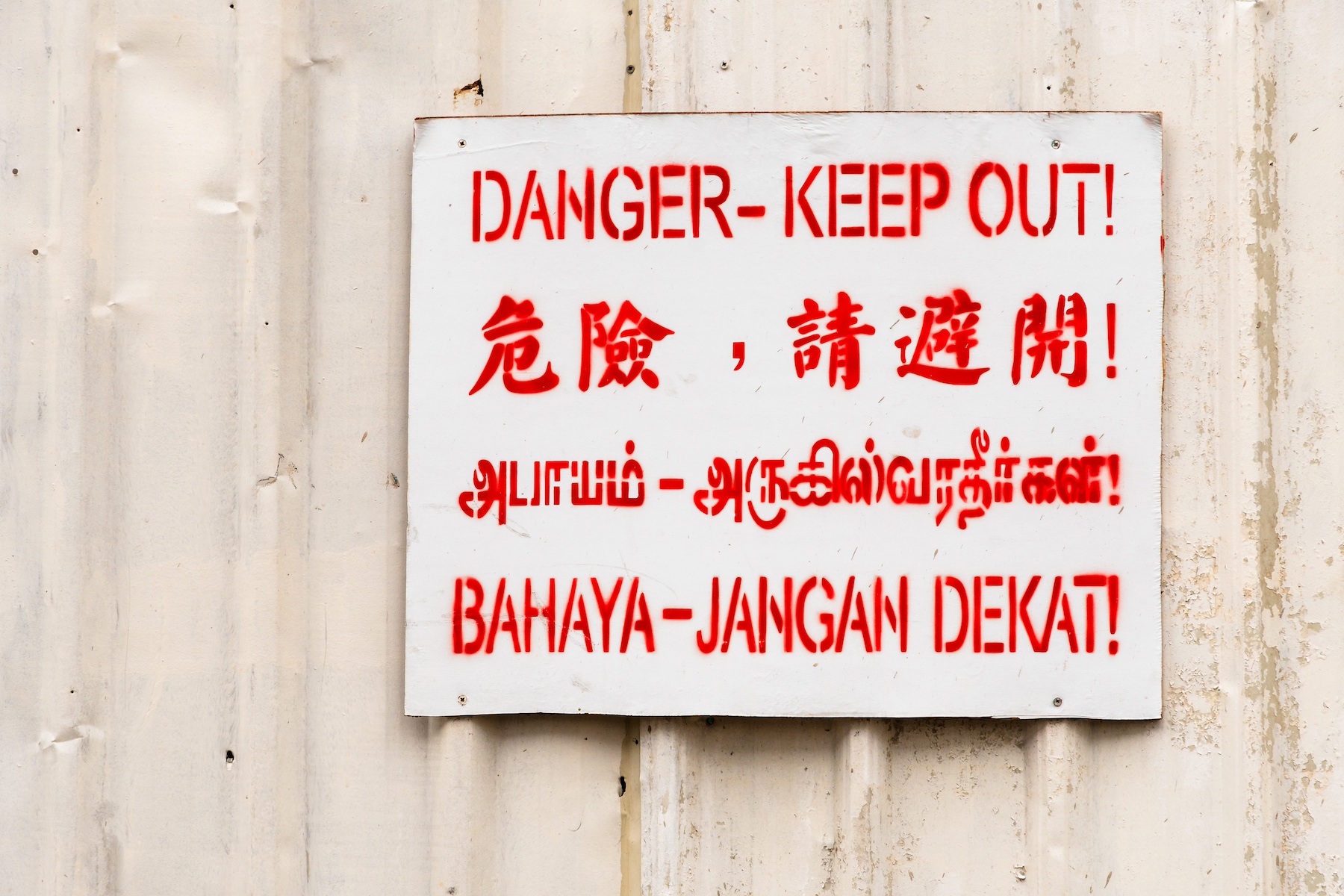
In practical terms, English emerges as the predominant language, functioning as a lingua franca across various ethnic groups. According to the 2020 census, 48% of the population spoke English at home.
Nevertheless, the manner in which English is spoken in Singapore might surprise you. Singlish, a creole amalgamating words from Singapore’s diverse linguistic pool, prevails.
While all Singaporeans receive formal education in standard English at school, everyday conversations often feature expressions like “Can or not?” to which the response might be “Can, lah.”(Can you do this? Yes.) Despite efforts of the Speak Good English Movement, Singlish reigns supreme on Singapore’s streets.
Around 75% of Singapore’s population is ethnically Chinese. In the past, this group spoke a wide variety of language varieties and dialects. However, the government has always insisted on Mandarin as an official language, and today, it is by far the most common Chinese dialect in Singapore.
Just under 30% of the population speak Mandarin at home, with less than 9% speaking other Chinese languages and varieties. This shows a remarkable transformation in 40 years, as in the 1980 census, around 60% of the population spoke other varieties of Chinese, with just 10% speaking Mandarin at home.
Singapore’s other two official languages are Malay and Tamil, spoken by 9% and 2.5% of the population respectively. Although less widespread than English and Mandarin, they are still important to the country. All children in Singapore must learn either Mandarin, Malay, or Tamil in school as a Mother Tongue Language (MTL).
The languages spoken worldwide
Many Singaporeans grow up bilingual in English and Mandarin, which allows them to communicate with over a quarter of the world’s population, as these are the two most widely spoken languages on the planet. 67 countries recognize English as an official language.
Meanwhile, Mandarin has over a billion speakers and is an official language in China and Taiwan. There are also large Mandarin-speaking communities in Malaysia and Indonesia.
Malay is widespread in South-East Asia. It is an official language in Malaysia, Indonesia, Brunei, and Singapore, with over 200 million speakers. Indonesian originates in Malay, and the tongues are mutually intelligible, meaning speakers of the two languages can understand each other.

About 90 million people speak Tamil, the vast majority in southern India. It is also an official language of Sri Lanka.
Does Singapore have sign language?
Singapore Sign Language (SgSL) is a unique blend of three different languages: American Sign Language (ASL), Shanghainese Sign Language (SSL), and Signing Exact English (SEE). It also has some unique elements developed to fit local needs.
It’s hard to know exactly how many people speak SgSL. The Singapore Association for the Deaf (SADeaf) estimates that there are around 500,000 deaf people in the country, and at least one-third of them speak sign language. Mainstream schools don’t teach sign language, but SADeaf runs workshops and short courses for people who want to learn.
Origins and history of the four languages
Mandarin
Mandarin is the most widely spoken dialect of Chinese. While English speakers call it Mandarin, you may also hear it as Putonghua. It originated in mainland China and became widespread in Singapore in the 19th century when Chinese people emigrated to the Lion City. For many years, most spoke Cantonese, Hokkien, and Hainanese, which are not mutually intelligible.
By the late 20th century, Chinese Singaporeans comprised around 75% of the population. In 1979, the Singaporean government launched the Speak Mandarin Campaign to encourage it as a lingua franca. The campaign was enormously successful, and today, Mandarin is by far the most common Chinese dialect in Singapore.
Singaporean Mandarin has some distinctive words and phrases that do not exist in other countries. This reflects Singapore’s unique heritage and culture. As a written language, it officially uses simplified Chinese.
However, you can still find traditional Chinese in written form on many storefronts, advertisements, and books around Singapore. Moreover, some characters are simplified differently in Singapore and mainland China, which can create a slight language barrier.
Malay
The Singaporean constitution still lists Malay as the country’s national language, although a minority speaks it. This status is due to its historical importance as Singapore’s indigenous language.
Of the country’s four national languages, Malay was the first to be spoken in Singapore, as it was the mother tongue of the ancient Melayu kingdom. Today, the position of National Language is mainly ceremonial, with little impact on the daily life of Singaporeans. For example, the country’s national anthem has Malay lyrics.
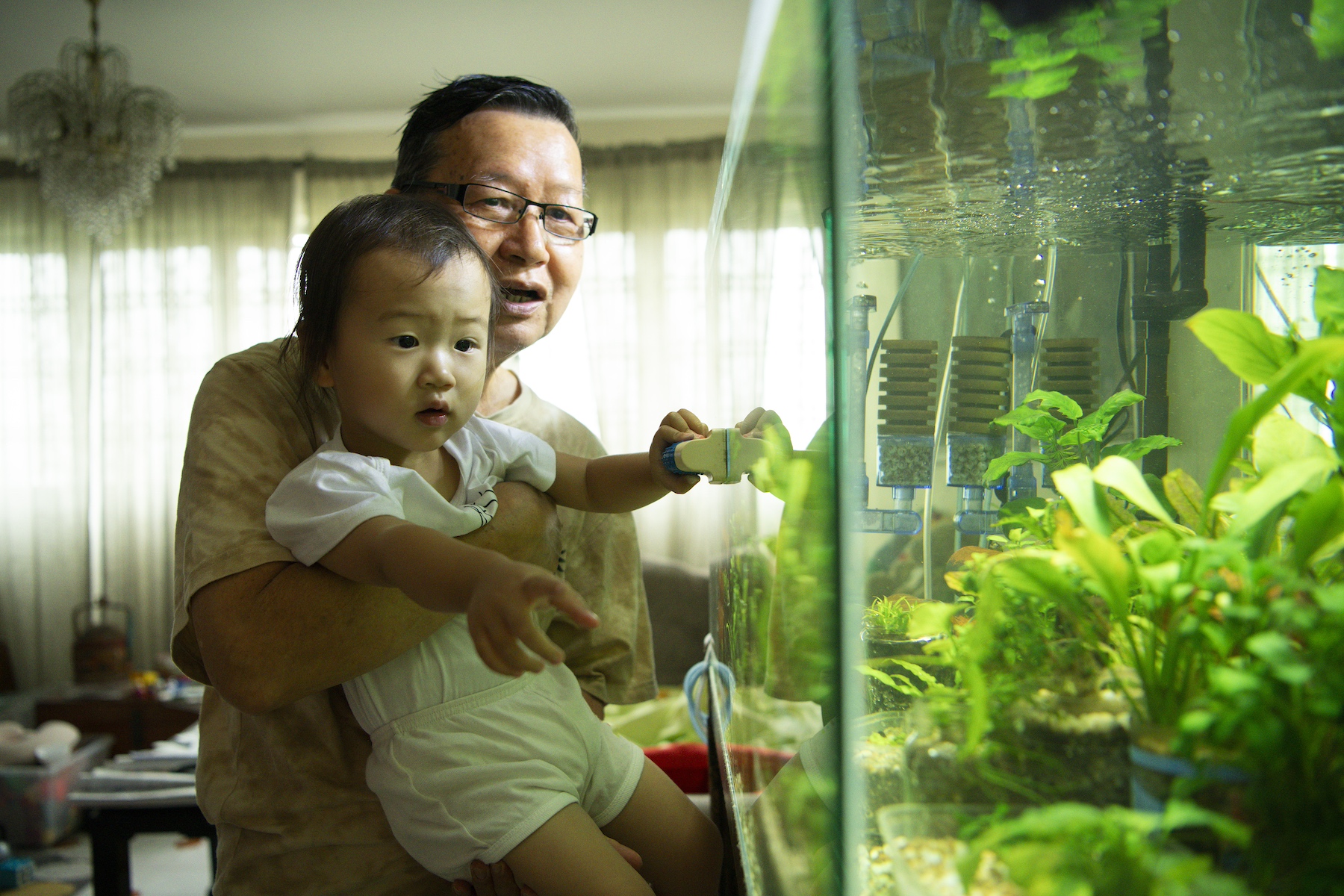
Malay uses the Roman alphabet. The Malay Language Council oversees the language in Singapore. It has published a standardized version of the language and organizes cultural events.
Tamil
Tamil is a South Asian language spoken in Sri Lanka and some states in India’s southern region. It is the most common language among Singapore’s Indian community, many of whom can usually trace their roots back to south India. Today, Tamil is India’s 5th most widely-spoken language, with around 69 million speakers.
Indians first came to Singapore in the 19th century. At this time, both India and Singapore were part of the British Empire, and many young men emigrated to the Lion City to seek their fortune.
At first, Singapore’s Indian community was largely transient, with most people returning to India after a few years of work. In time, though, more and more of them chose to settle in Singapore, marrying and raising families. Soon, Singapore had a flourishing Indian population.
Tamil is the least spoken of Singapore’s official languages today, except among ethnic Tamils. Singaporeans rarely use Tamil, though you can still hear it in neighborhoods like Little India. The Tamil Language Council maintains both the language and the unique elements of Indian-Singaporean culture.
Tamil uses a Brahmic script. A handful of minority languages have also adopted the Tamil script, but it differs from the writing systems of other major Indian languages.
What are the dialects in Singapore?
Mandarin
The Speak Mandarin Campaign has been immensely successful over the decades. The government targeted different groups, such as hawkers, parents, transport workers, and executives, gradually encouraging more and more Chinese speakers to stop using other dialects in favor of Mandarin.
Approximately 8.7% of the population speak other Chinese languages or varieties at home, such as Hokkien or Cantonese. The former is also widely spoken in many Southeast Asian countries with a large Chinese diaspora, such as Brunei, the Philippines, Thailand, and Myanmar. It is also one of the official languages of Taiwan. Cantonese, meanwhile, is the most common language in Hong Kong and Macau.
Malay
Singaporeans speak the standard version of Malay, known as Bahasa Malaysia, also spoken in Malaysia. Neighboring Indonesia, however, speaks a different variety of Malay known officially as the Indonesian language. While Malay and Indonesian are separate languages, they are mutually intelligible.

There is a clear difference between standard Singaporean Malay and bahasa pasar, or street Singaporean Malay. Radio, TV, and newspapers use the former; you’ll also hear it spoken by politicians on formal occasions. Bahasa pasar means “market language” and is the common tongue for most Malay speakers in Singapore.
Tamil
Singaporean Tamil preserves certain words and phrases which have long since fallen out of common use in India. However, the grammar remains the same, and a Singaporean speaker would have no problem chatting with an Indian friend in Tamil. There is a very small presence of other Indian languages such as Malayalam, Hindi, Marathi, and Punjabi in Singapore.
Pronunciation and phonology of the languages
Mandarin
Mandarin is a tonal language. To speak it, learners need to master its four tones, which completely change the meaning of a word. For example, the syllable ma might mean horse, mother, hemp, or scold, depending on the tone. Whether traditional or simplified, written Chinese bears no relation to how the language is spoken. People use pinyin, a writing system that transliterates Chinese into the Roman alphabet phonetically, with diacritic accents to indicate the tone of each syllable.
Malay
Malay uses the Latin alphabet. Many people consider it a reasonably easy language to pronounce. There are eight vowel sounds in Malay, while English boasts a staggering twenty. Moreover, all the vowel sounds in Malay also exist in English, so an English speaker should find it relatively straightforward to learn.
However, one downside of written Malay is that it is not strictly phonetic. The word kamu, for example, is pronounced with either a long or short a sound, which will change its meaning from camp to you.
Tamil
Tamil pronunciation can be extremely tricky for learners. The language is characterized by unusual sounds, such as consonants that require the speaker to bend their tongue backward. Practicing your Tamil pronunciation can be a real workout for the mouth.
The good news is that Tamil is a phonetic language, so if you can match sounds with letters, you can read it out loud. The bad news is that it has its own script, so to appreciate this quality, you’ll first have to master an entirely new way of reading and writing. If you are eager to learn, Tamil is a truly rewarding language, thanks to its harmonious, almost musical rhythms.
Grammar of the languages in Singapore
Mandarin
While pronunciation and writing can be very tricky in Mandarin, grammar is actually pretty simple. For example, you can easily form a yes or no question just by adding the syllable ma to a statement:
你在看书 (nǐ zài kànshū): You are reading
你在看书吗? (nǐ zài kànshū ma?): Are you reading?
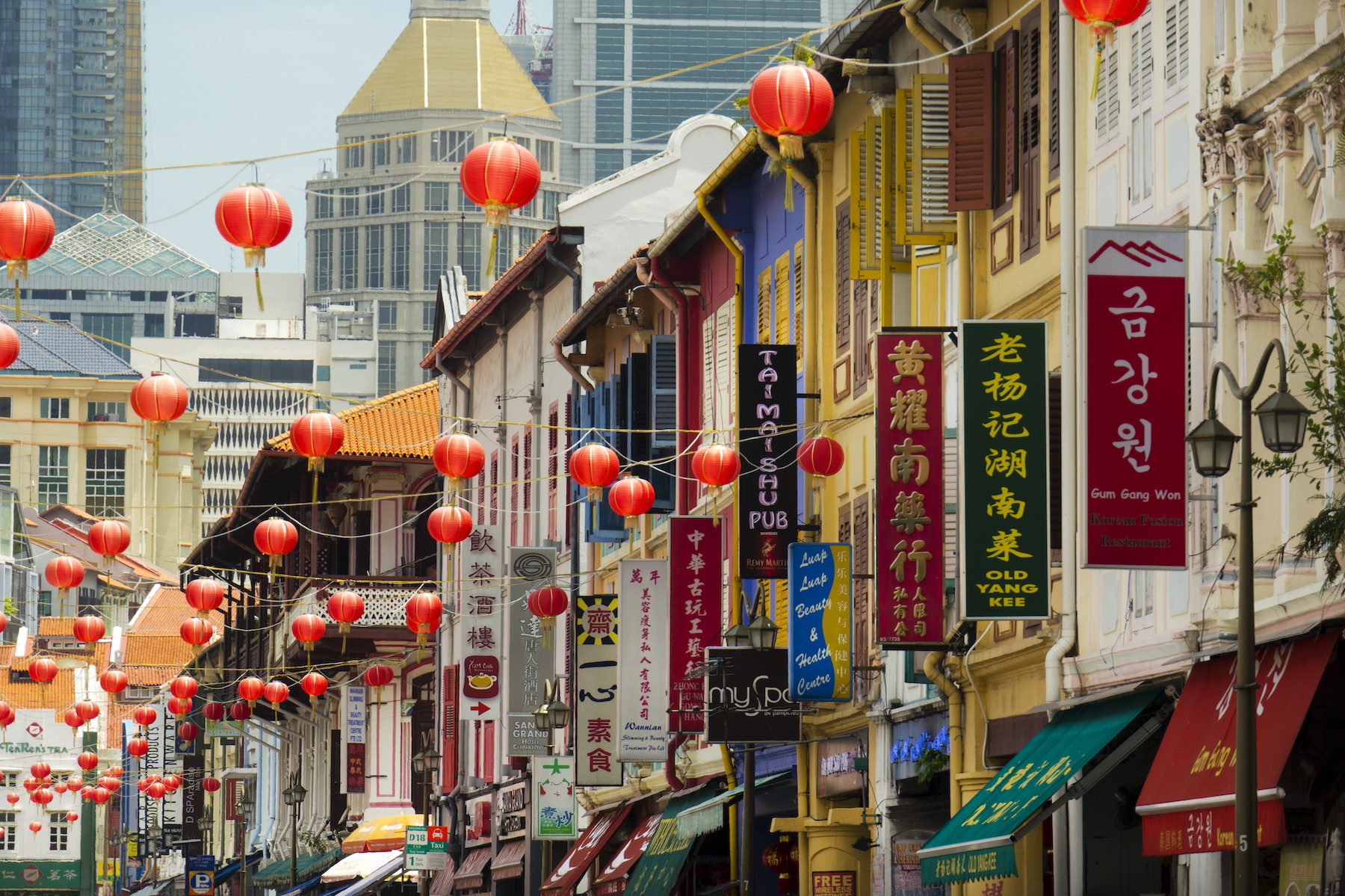
Mandarin has no articles, no grammatical gender, and verb conjugation does not exist. The language has no past tense at all. Instead, you’ll indicate that something happened in the past by adding a time expression such as yesterday, last week, two years ago, and so on.
Malay
There’s no grammatical gender in Malay, but it does have different forms of the second person, depending on formality:
| Formality | Malay | English |
| Informal | awak | you |
| Formal | anda | you |
You don’t need to worry about conjugation when studying Malay. It’s easy to form tenses by adding an extra word to the verb:
| Tense | Malay | English |
| sedang (past tense) | Saya sedang peri | I go |
| sudah (present tense) | Saya sudah peri | I went |
| akan (future tense) | Saya akan peri | I will go |
Tamil
Tamil is one of the world’s oldest surviving languages, with 2,000 years of complex grammar. Nouns are classified according to gender (masculine, feminine, neutral), number (singular or plural), and case (nominative, accusative, dative, genitive, locative, instrumental, comitative, abessive, or vocative). Adjectives and pronouns must agree with the nouns.
You can also conjugate verbs according to person (first, second, third), number (singular or plural), tense (past, present, future), mood (indicative, imperative, subjunctive), and voice (active, passive).
What’s more, Tamil follows a fundamentally different word order from English. An English sentence is SVO (subject-verb-object), while a Tamil sentence is SOV (subject-object-verb). Written Tamil contains a total of 247 letters. This may seem daunting, but remember that other Indian languages, such as Telugu, have over 500 letters by comparison.
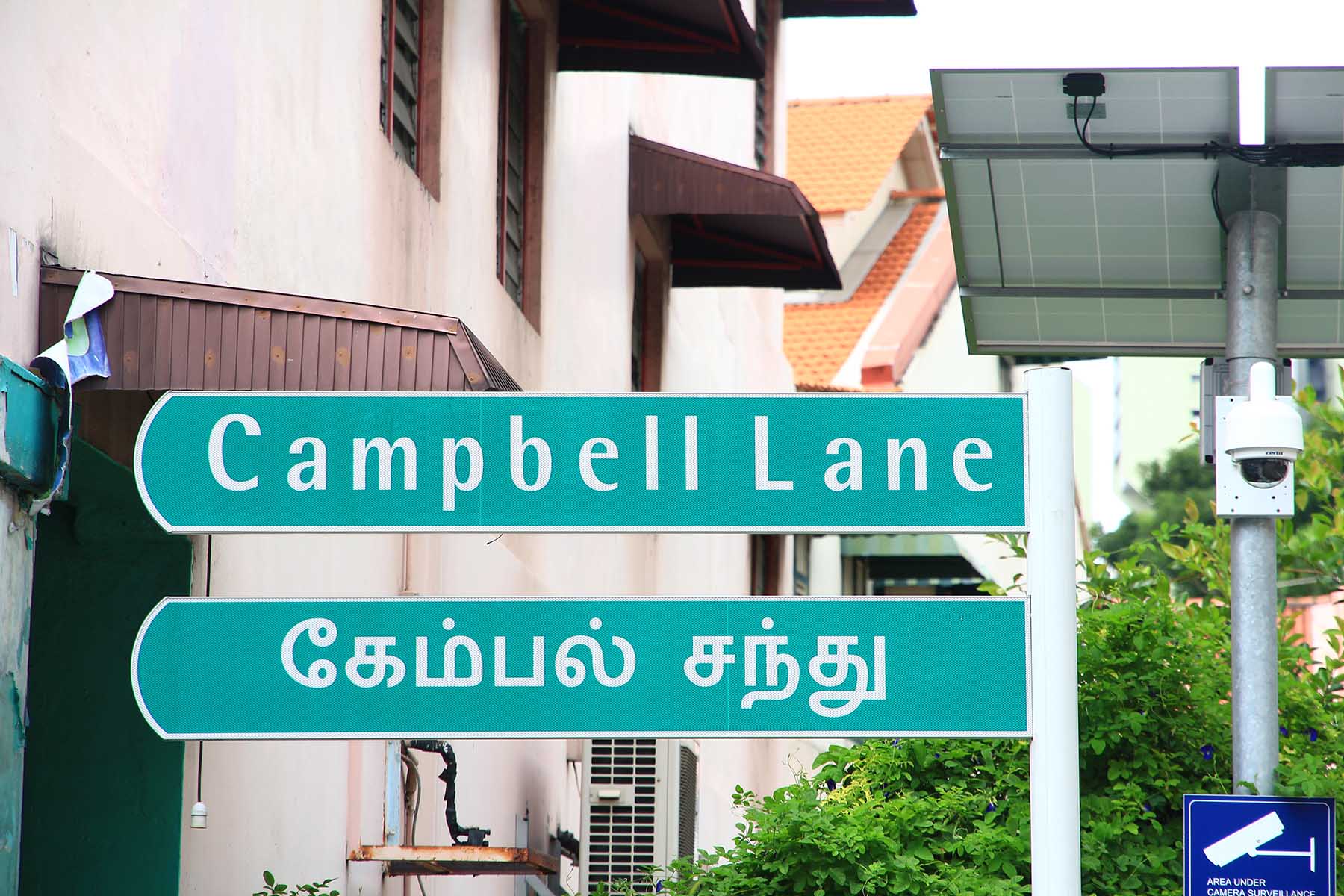
Interesting facts about Singapore’s languages
- Singapore’s national anthem was composed in Malay. Although official translations exist in the other three official languages, federal law dictates that the anthem may only be sung in the original Malay version.
- Although most Singaporeans speak Singlish, almost everything around the city-state is written in English and finding fluent speakers is easy
- Tamil is one of the world’s few surviving classical languages. Some Tamil literature still exists from as far back as the 3rd century BCE.
- No matter what language you speak, you’ll hear the word lah added to the end of almost every sentence in Singapore. It doesn’t have a single concise meaning, but people often use it to add emotional emphasis.
Language learning while in the country
As an expat in Singapore, you’ll be able to get by just speaking English. That’s particularly true in the world of work, as English is the lingua franca of business in Singapore. However, you might want to learn Singapore’s other languages, perhaps for a new career, to communicate better with your neighbors, or just as a personal challenge.
Children must learn a Mother Tongue Language (MTL) while at school. The National Heritage Board spearheads nationwide language campaigns and runs educational events to promote and encourage using Mandarin, Malay, Tamil, and standard English.
Kids and adults will find plenty of class options, including private tutors, informal language exchange events, language centers and academies, and universities. The government often subsidizes language courses for citizens, but expats must pay their way.
Useful resources
- Malay Language Council – cultural community for Malay speakers in Singapore
- Mandarin Language Council – cultural community for Mandarin speakers in Singapore
- Tamil Language Council – cultural community for Tamil speakers in Singapore
- Singlish – informative article on how the Singaporean creole came to be
